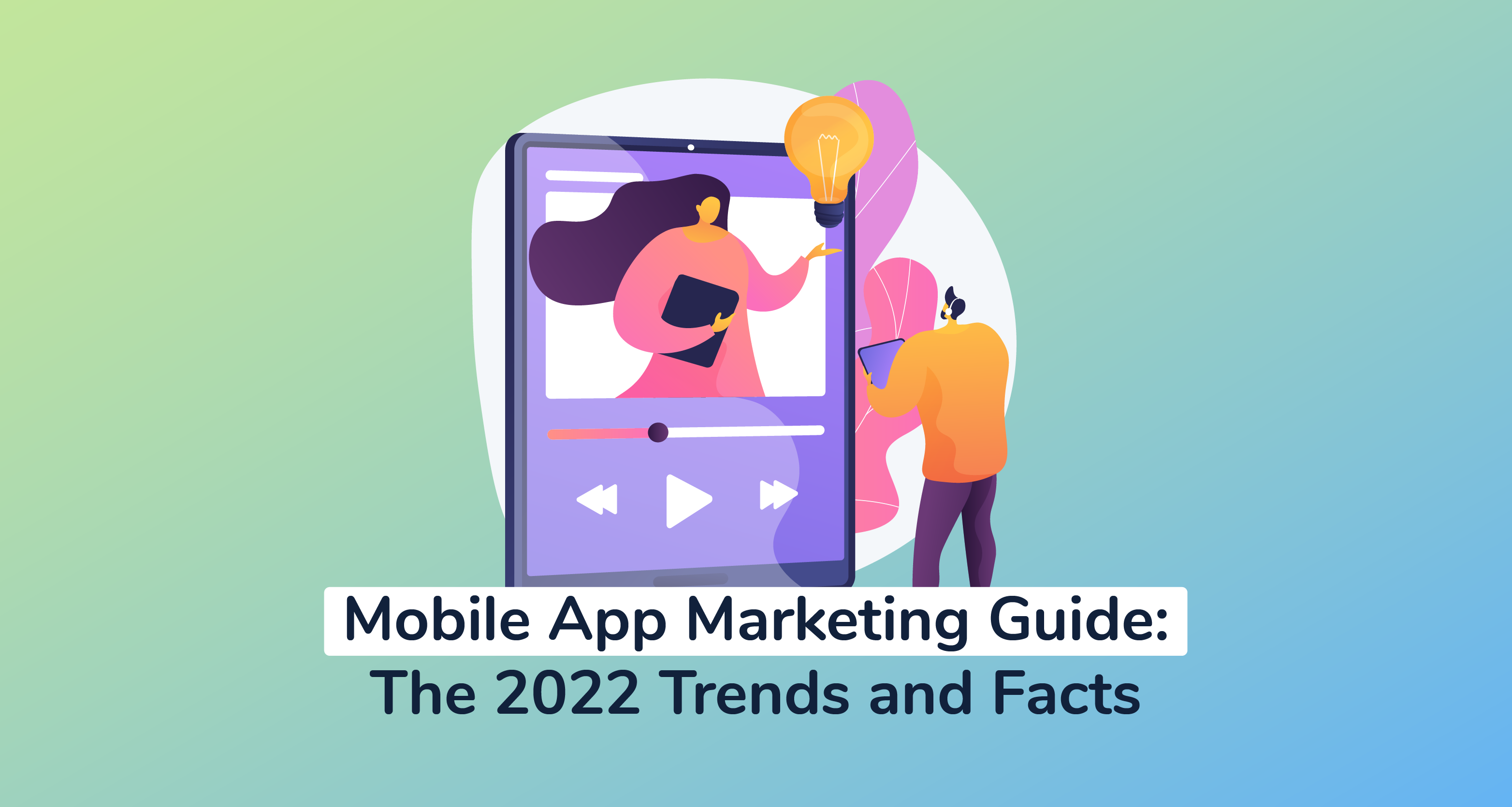
3+ Deadly Mobile App Marketing Mistakes Killing Your App Revenue
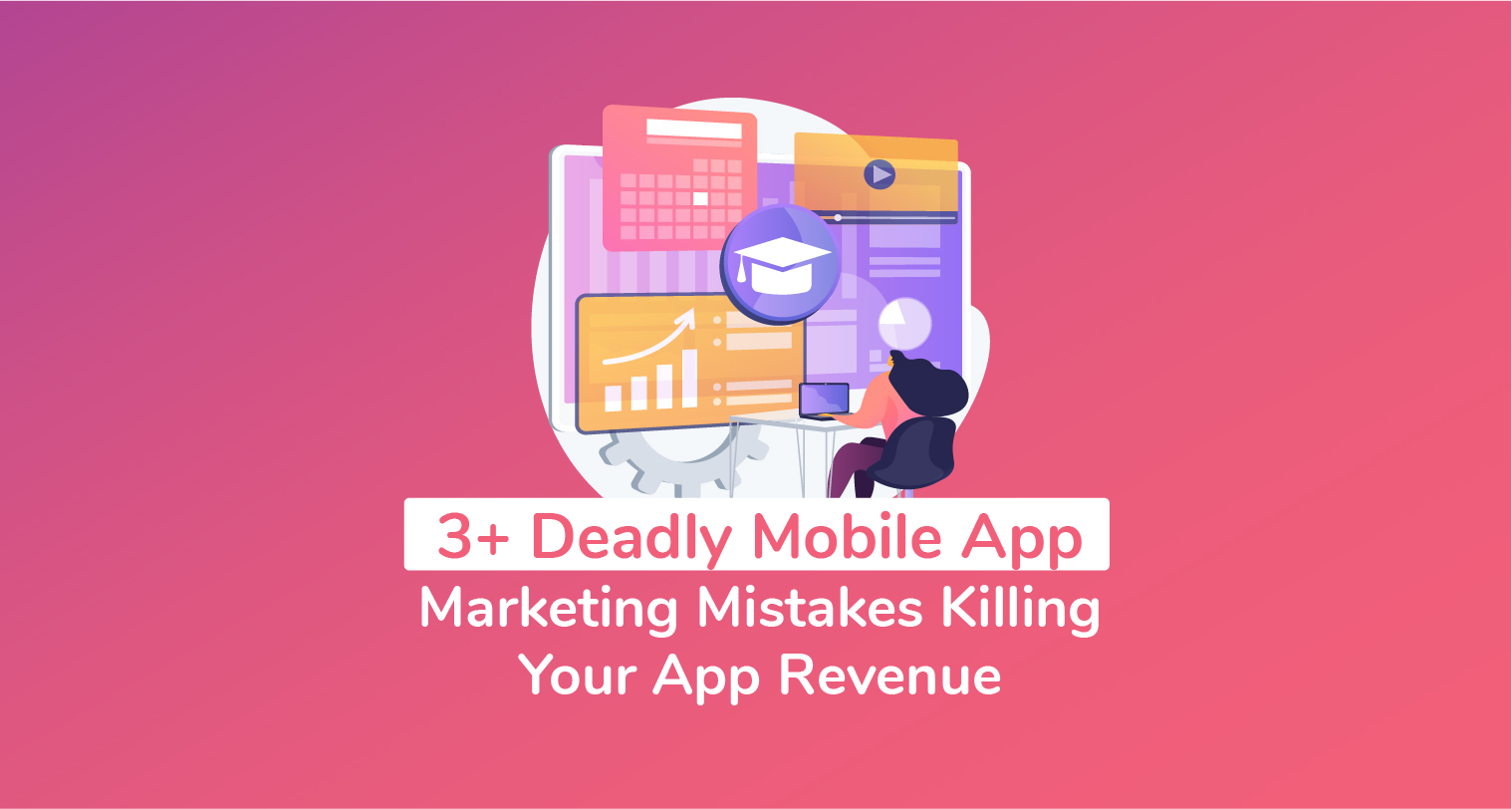
In my 10+ years as an app marketer, I’ve witnessed all sorts of mobile app marketing mistakes from app owners, app developers, and, in some cases, even app promoters.
Table of Contents
-
-
- Uneven Revenue Distribution In The Mobile App Market
- Case Example Of Why App Success Requires Much More Than A Good Build
- 3+ Biggest Mobile App Marketing Mistakes That Are Hurting Your App’s Profitability
- #1: Treating Your Mobile App Like A Hobby
- 1.1. What is Lifetime Value?
- 1.2. How Do You Determine The Lifetime Value?
- #2: Handling App Marketing As An Expense – Not An Investment
- 2.1. Why Should You Spend More On Mobile App Marketing?
- 2.2. How Much Should I Spend On Mobile App Marketing?
- #3: Poor Success Tracking
- 3.1. What Is The 80/20 Marketing Rule?
- 3.2. How Do I Find Mobile App Marketing Data And Analytics?
- 3.3. How Do I Apply This Data To My Marketing Campaigns?
- #1: Treating Your Mobile App Like A Hobby
- Key Takeaways
- Uneven Revenue Distribution In The Mobile App Market
-
I could tell you, for instance, all the gory details about the perilous mobile app marketing mistakes that continue to restrict the reach of various digital marketing campaigns.
Another class of mobile app marketing mistakes that exceedingly wreak havoc are those that negatively affect your campaign budget. They’re widely dreaded because they end up increasing the overall app user acquisition costs.
But still, that’s nothing that compares to this other group of mobile app marketing mistakes. I’m talking about the mobile app marketing sins that’ll kill not just your marketing efforts, but also your entire app business.
I say they’re the deadliest principally because, unlike other common types of mistakes, they are less obvious. They often seem harmless at first, but then end up progressively compromising the one thing that matters most – your mobile app revenue and ROI.
Here’s the background to the problem…
Uneven Revenue Distribution In The Mobile App Market
Sure, you could say that the mobile app market is seemingly doing well in terms of revenue. Mobile applications across the App Store and Google Play Store are reportedly generating $693 billion in revenue – up from $285 billion in 2017.
And the trend is not slowing down anytime soon. By the time we get to 2023, the revenue figures will predictably hit $935 billion.
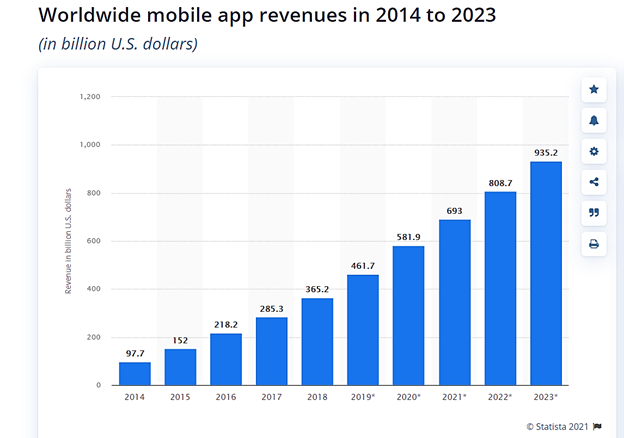
But, make no mistake about it. If you thought that these promising figures automatically raise your app revenue prospects, I’m sorry to burst your bubble, but things are really not that simple for app publishers.
You see, almost all the money here goes to the top 0.1% of apps. If you looked into 2019’s industry revenue reports, for instance, you’d notice that the top 200 apps alone raked in an astonishing $13 billion in just four months of the year.
And what about the rest?
Well, the hard truth is, the bulk of the mobile apps today are not even breaking even. Only about 0.01% of mobile apps are turning out to be real financial successes for their mobile app development teams.
Curious why this number is so low? Why are so many apps losing revenue generation opportunities to just a handful of mobile apps?
Well, one argument here is that the mobile market is saturated with similar apps.
Ok, that could be true – but only to a certain extent. It turns out that the low ROI figures are not limited to poorly developed mobile apps. Even well-built apps that are launched with rather strong and unique value propositions are bearing the brunt of the fiercely competitive market.
Here’s a case example that you might relate with…
Case Example Of Why App Success Requires Much More Than A Good Build
Recently, I spoke to an app business owner with an amazing new health and fitness mobile app. His goal was to create a native app that positively impacted people’s lives while improving their health.
In particular, this man spent two years of his life and $500,000 on mobile app development in the hopes of having a successful app launch – built on a strong app marketing strategy.
However, after six months of his mobile app launching, he wasn’t reaching the numbers he had hoped for.
His original goal was to hit 100,000 app downloads in the first six months, but then he only managed 200 – which was quite frustrating and discouraging for him.
You see, while he had indeed built a great mobile app that offered a solid value proposition, prospective users had no idea it existed.
The app owner had somehow failed to prioritize mobile app awareness campaigns before, during, and after the app launch. What’s more, he downplayed the role of paid search ads in driving app discovery.
Now, such occurrences are pretty common in the mobile app market. So much so, in fact, 68% of Android apps never make it past 1,000 mobile app downloads – while, in contrast, only 0.1% manage over 5 million app installs.
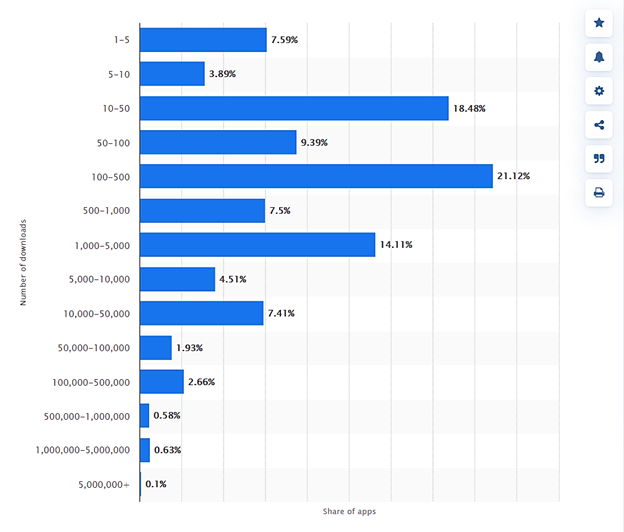
To help you overcome these struggles, I’ll be sharing the mobile app marketing mistakes that I’ve seen many people making pre and post-app-launch. In particular, I’ll focus on the three most damaging ones that could be negatively affecting your overall mobile app revenue.
And that’s not all. I’ve also provided actionable pointers on how you can effectively correct mobile app marketing mistakes to improve your business ROI.
3+ Biggest Mobile App Marketing Mistakes That Are Hurting Your App’s Profitability.
#1: Treating Your Mobile App Like A Hobby

The first and biggest mistake you can make, especially when launching a mobile app, is failing to take it seriously. New app owners across both the Google Play Store and Apple App Store notoriously treat their mobile applications as small side projects, instead of bonafide businesses.
Now, this is where you need to remember that a business makes sales and revenue. A hobby does not.
You cannot sit back and expect your mobile app to randomly create a profitable revenue model on its own – you need to figure it all out and do the necessary to get things going. This whole process of setting up your business to successfully make money is the first step to a profitable journey.
But, don’t get me wrong. We’re not talking about just any random revenue model. The entire framework has to be strong enough to support the business for the long haul.
This leads us to another major mistake that many people make when launching an app – they fail to establish a perfectly strong revenue model based on the customer lifetime value of their mobile users.
1.1. What is Lifetime Value?
Lifetime Value, also known as LTV, is your primary revenue metric. This is the core ROI parameter that top mobile apps in the industry monitor.
The reason why it’s called “Lifetime Value” and why this is so important is because it represents the total financial value of a consumer.It tells you how much revenue each app user generates in his or her lifetime.
For you to understand how much to spend on mobile app marketing to acquire a mobile user, you must first understand how much a new app user is worth to you.
All the top mobile apps in the industry use this model as it directly correlates with their success.
Let’s take a look at Uber, for example.
In the beginning, Uber offered new app users $25 credit upfront to use on its taxi rides.
Now, without the context, $25 would seem like a whole lot of money to lose for every single app user. So, why was Uber doing it?
The simple answer is, they understood that their lifetime value per user was far greater than $25.
They knew that for every $25 they gave upfront, they stood to generate greater returns over the lifetime of that user.
You see, $25 translates to roughly two rides on average. That’s nothing compared to the number of rides that every Uber user takes per year.
The average American Uber user, for instance, spends over $4,000 every year on Uber – which ultimately adds up to a lifetime value of $323,000. So, that $25 incentive is extremely minimal in the long run.
Well, I know what you might be thinking at this point. That while the app marketing strategy worked for Uber, you may not have all those billions of dollars to spend.
Ok, fair enough. But, here’s the thing – Uber actually offered this incentive way before it was a billion-dollar app. Its marketing team understood the value that their app was going to offer – and that after one or two rides, users would get hooked.
If you can implement a strong monetization strategy and know your lifetime value, you will be far ahead of the competition.
1.2. How Do You Determine The Lifetime Value?
Let’s go back to your app user’s Lifetime Value. Once you know how much your users are worth (AKA your lifetime value) you can determine how much you can spend to acquire new ones.
But, how exactly should you do this on a brand-new app that doesn’t have any customer data for referencing?
Well, I’ll admit that such a case can be a bit tricky – so, I’d advise you to begin with estimates before you start generating actual sales.
Then when you finally begin selling, you could rework out the estimates by dividing the Total Revenue for a chosen period of time by the Number of Customers over the same chosen period of time.
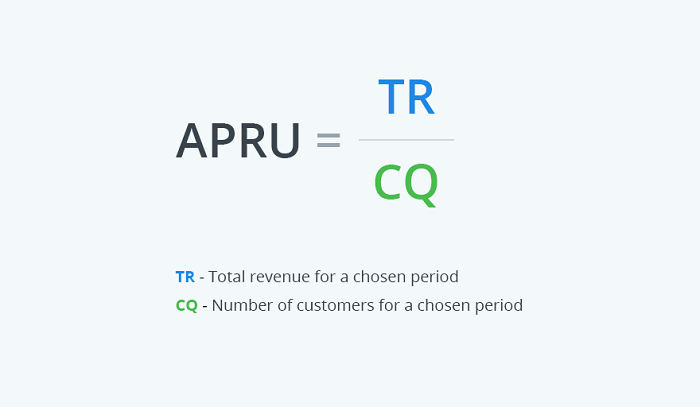
How to Find The Average Revenue Per User (ARPU).Source: Medium
Although this number is likely to change (and hopefully increase) over time, the formula itself will give you a general idea of what to expect over the long haul.
And as you leverage the findings as guidelines, you should start developing a strategy for positioning the mobile app so that its users are not only interested in paying you once, but will do so two, three, or even ten times over the course of the year.
Just like Uber, you need to shift your mindset from one upfront sale to long-term sales.
#2: Handling App Marketing As An Expense – Not An Investment

The second biggest mistake app owners make is not spending enough on the right mobile app marketing strategies, both paid and organic.
Unfortunately, most of them make the mistake of seeing mobile app marketing as an expense instead of an investment. That’s why, in fact, you’ll hear app owners saying something like, “I’ve allocated a marketing expenditure of $50k or $100k to social media campaigns.”
The truth about mobile app marketing, however, is that it’s an investment – but only if it’s done right.
2.1. Why Should You Spend More On Mobile App Marketing?
If you gave me $1, and I gave you $5 back, wouldn’t that be a good deal?
Of course, it would. 5:1 is undeniably a pretty solid return on investment. So, of course, it’s only natural that you’d want to do that deal again, and possibly maintain the same growth and momentum for as long as possible.
The idea might seem like common sense – but when it comes to mobile app marketing, most people rush to randomly allocate a fixed amount, and then end up missing out on all the potential extra returns.
If you desire better results than you’re currently getting, you need to start thinking differently about app marketing and focus on the subsequent return on investment – instead of the initial expense.
While I’m sure that you’d want to launch your app for the same reason many people do, the reality is that your subsequent app marketing campaigns won’t be able to reach that many prospects without a substantial budget.
You’ll notice, for instance, that multi-million dollar app creators tend to think of their marketing results as a return on investment – while the marketing budget itself is treated as a variable. It’s no surprise that their spending on mobile marketing and paid advertising is still increasing year in, year out.
Furthermore, the CPA (cost per acquisition) for mobile apps is steadily rising across all the popular digital platforms. The average CPA for an iOS App Store app is about $3.6, while Android apps have an average CPA of $1.22.
Then if you choose to run a paid app marketing campaign on social media sites like Facebook, you can expect a CPA of about $1.04. The overall results tend to increase as the campaign budget rises.
Don’t be the type that spends $500,000 to develop a mobile app over a period of 2 years, only to settle for just 200 app downloads because you cannot afford to spend big on your app marketing strategy.
2.2. How Much Should I Spend On Mobile App Marketing?
When it comes to mobile app marketing, we advise spending equal (if not double) the amount that you spent on mobile app development.
If, for instance, you spent $50,000 on mobile app development, then you should consider spending a minimum of $100,000 to reach your initial launch goals. Social media (eg Twitter) could be one of the campaign channels, along with App Store Optimization, paid search, app press releases, etc.
This is how the most successful mobile app business owners think. Marketing, to them, is an investment because it’s the #1 driver to reaching their mobile app goals.
#3: Poor Success Tracking

The third and final biggest mistake that app business owners make is incorrectly measuring and tracking success.
As a mobile app creator, you probably spend most of your time enhancing your app through technical development or marketing.
Now, imagine if you happened to discover that some of your development enhancements and marketing efforts have not actually been bringing in high-value app downloads – you would probably do some readjustments, right?
The power to make such insightful decisions comes from mobile app analytics tools. They are the ones that track all your campaigns across multiple digital platforms, and then subsequently generate detailed performance reports.
Unfortunately, many app owners are intimidated by advanced mobile app analytics, while others don’t truly understand just why they need to adopt centralized measuring tools.
Other than that, a lot of people make the mistake of focusing their attention on the wrong metrics, instead of just following the 80/20 marketing rule.
3.1. What Is The 80/20 Marketing Rule?
The best mobile app marketing initiatives are guided by the 80/20 rule. That means that 20% of the mobile marketing campaigns (such as specific ad campaigns, microsites, mobile websites, or channels) account for 80% of the app downloads.
As such, you might want to identify your 20% share from the most effective marketing efforts. You just need to consistently track all the campaigns using your selected key performance metrics and then compare them to identify the core high ROI channels. That way, you eventually get to focus on what truly works rather than sticking with what doesn’t.
Without tracking the key performance metrics, you won’t be able to get a clear picture of what’s driving your app downloads, where your engaged users are coming from, or what’s really driving your app revenue. Plus, you could be wasting your mobile ad spend on strategies that are not driving real returns.
In essence, you can think of campaign analytics as the roadmap to success. It’s this data that provides the breadcrumbs for establishing a truly successful mobile app marketing strategy.
3.2. How Do I Find Mobile App Marketing Data And Analytics?
So, where does all this information come from?
Well, it can be from a variety of sources.
According to a report from Adobe, most marketers rely on CRM, real-time data systems powered by AI, and cross-channel analytics to make marketing decisions.
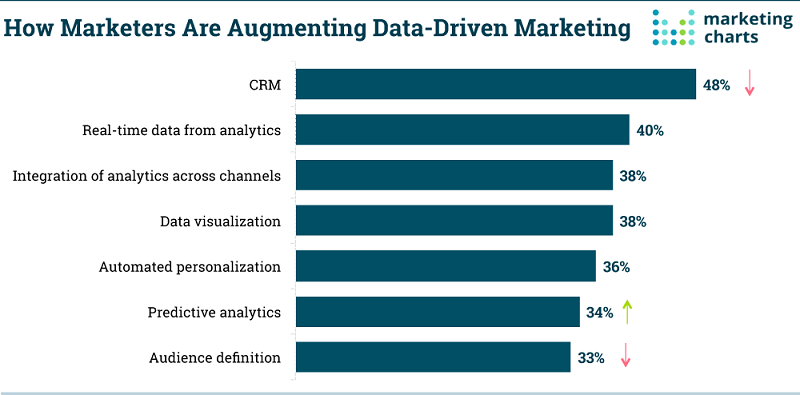
3.3. How Do I Apply This Data To My Marketing Campaigns?
Let’s go back to Uber as an example.
The company reported that when they tracked Uber’s revenue and retention values, they discovered that the more riders used the mobile app, the more impatient they grew towards the whole process of waiting to be picked up. That, in other words, meant that seasoned users were less likely to wait for their assigned cabs.
In 2013, for example, users were willing to wait up to 12 minutes for an Uber car to arrive before canceling the app. One year later, the same users were only willing to wait 8 minutes before canceling their rides.
Once Uber noticed the trend from the app’s analytics, they swung into action and tweaked the whole system to minimize the waiting period. As of 2018, for instance, the average waiting time had dropped to just five minutes– which helped the company retain its users.
This was all because Uber had an analytics system that continually tracked how users interacted with the app. The findings helped the company progressively enhance its services and stay ahead of potential competitors.
The primary lesson behind this story is that you must correctly measure your key performance indicators. For Uber, if they hadn’t tracked this specific key metric, they would have probably run losses of tens of millions of dollars per month.
That said, here are fundamental questions you should ask yourself to establish a solid tracking strategy:
- What key performance metrics are you tracking?
- What do these numbers tell you about the user experience of your app?
- How can you improve these numbers?
- How do you measure the success of your app?
- What do you define as campaign success?
Without tracking your growth or decline, you won’t fully understand how or what to improve.
And remember, you can’t improve what you can’t measure.
Key Takeaways
To sum everything we’ve discussed here, here are the key takeaways that you should keep in mind:
- Mobile applications across the App Store and Google Play Store are reportedly generating $693 billion in revenue – up from $285 billion in 2017. By the time we get to 2023, the revenue figures will predictably hit $935 billion.
- In 2019, the top 200 apps alone raked in an astonishing $13 billion in just four months of the year.
- Only about 0.01% of mobile apps are turning out to be real financial successes for their mobile app development teams.
- Even well-built apps that are launched with rather strong and unique value propositions are bearing the brunt of the fiercely competitive market.
- 68% of Android apps never make it past 1,000 mobile app downloads – while, in contrast, only 0.1% manage over 5 million app installs.
- New app owners across both the Google Play Store and Apple App Store notoriously treat their mobile applications as small side projects, instead of bonafide businesses.
- Lifetime Value, also known as LTV, represents the total financial value of a consumer. It tells you how much revenue each app user generates in his or her lifetime.
- For you to understand how much to spend on mobile app marketing to acquire a mobile user, you must first understand how much a new app user is worth to you.
- Lifetime Value is established by dividing the Total Revenue for a chosen period of time by the Number of Customers over the same chosen period of time.
- Develop a strategy for positioning the mobile app so that its users are not only interested in paying you once, but will do so two, three, or even ten times over the course of the year.
- The truth about mobile app marketing, however, is that it’s an investment, not an expense – but only if it’s done right.
- You need to start thinking differently about app marketing and focus on the subsequent return on investment – instead of the initial expense.
- The average CPA for an iOS App Store app is about $3.6, while Android apps have an average CPA of $1.22.
- If you choose to run a paid app marketing campaign on social media sites like Facebook, you can expect a CPA of about $1.04.
- When it comes to mobile app marketing, we advise spending equal (if not double) the amount that you spent on mobile app development.
- Mobile app analytics tools track all your campaigns across multiple digital platforms, and then subsequently generate detailed performance reports.
- The 80/20 rule means that 20% of the mobile marketing campaigns (such as specific ad campaigns, microsites, mobile websites, or channels) account for 80% of the app downloads.
- You might want to identify your 20% share from the most effective marketing efforts.
- Campaign analytics form the roadmap to success. It’s this data that provides the breadcrumbs for establishing a truly successful mobile app marketing strategy.
- According to a report from Adobe, most marketers rely on CRM, real-time data systems powered by AI, and cross-channel analytics to make marketing decisions.
- You can’t improve what you can’t measure.
Over To You
As always, I encourage you to keep refining your mobile app strategies to build an even bigger and more successful app business.
An app requires a business model with the right pricing, right messaging, and right delivery channels for engaging the right target customers. The key is to sell what your app users want and then deliver what they need.
This will not only keep your app alive but also consistently drive its growth.
Most importantly, though, you might want to:
- Have a strong revenue model.
- Keep thinking of your app as an actual business and not a hobby.
- Consider mobile app marketing as an investment and not an expense.
- Correctly measure and track your mobile app marketing campaigns.
Then if you’d like to elevate your mobile app marketing to the next level, we invite you to get in touch with our well-seasoned professional team. We have just the right combination of proven app promotion tactics that’ll remarkably drive not just your app downloads, but also the numbers of retained app users.
Newsletter
Don’t miss a thing! Sign up to receive daily news
Subscribe Newsletter




